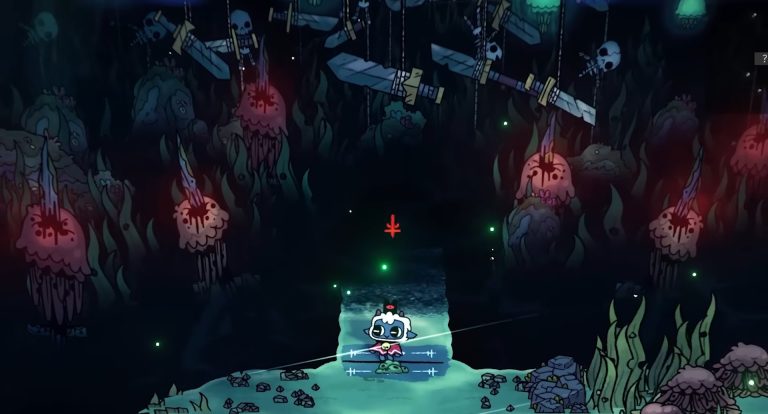

Why did you choose the top-down perspective? What were some challenges you encountered during implementation and how did you solve them? It was great being able to move the sprites around and create faux-3D structures to use the Editor to decide on the best angles for our characters and the camera. It felt like a waste if we just stuck to normal 2D, so we decided to take advantage of that extra axis! One of the reasons we picked the 2.5D look was because we were moving to Unity and it was our first time using a 3D engine. How did Unity enable you to manage the game’s combination of 2D and 3D assets to create a 2.5D look? We also have the flexibility of building whatever tools we want for ourselves. In the past, we’ve created our own editors, but the tools that are available for Unity and on the Asset Store are such timesavers. We chose it because of the great tools it offers for iterating, quick testing, and allowing designers to lay out levels. Yes, Cult of the Lamb is our first Unity project. Having a clear goal for what we wanted the experience to be meant we were all on the same page, and it was obvious when something was or wasn’t working.Ĭult of the Lamb is your first Unity project. We got very used to cutting ideas that didn’t achieve that goal, and “listening” to what the game wanted to be. But figuring out how to make those game mechanics took a lot of iteration and experimentation. The game had to feel like you were leading a cult, which meant we had to have rituals and sermons.

Once we had that, everything for the next three years was about making sure we kept hitting the “promise” the game’s theme created. It took around nine months of experimenting with different themes before we finally landed on the idea of the cult. We needed a player fantasy we could explain easily and that people would immediately understand. We knew we had to figure out a way to market the game in one sentence. At this point we still hadn’t come up with the cult theme. When I took it to Jimp and Julian, they loved it, but we immediately found that it was a really hard game to pitch when talking to publishers. I was excited about the idea of combining those two genres to create something that would become more than the sum of its parts, so I created a prototype that I planned to show to the other guys at an upcoming PAX. I noticed that games like RimWorld and Enter the Gungeon created so many interesting emergent narratives – stories that spring out of the game’s mechanics – that made it so everyone’s experience with the game was unique.

The game actually started with the idea of combining the genres of a roguelike with a colony sim/base builder.

What was your source of inspiration for Cult of the Lamb? How did you develop the idea?įunny enough, the cult stuff didn’t come until much later.


 0 kommentar(er)
0 kommentar(er)
